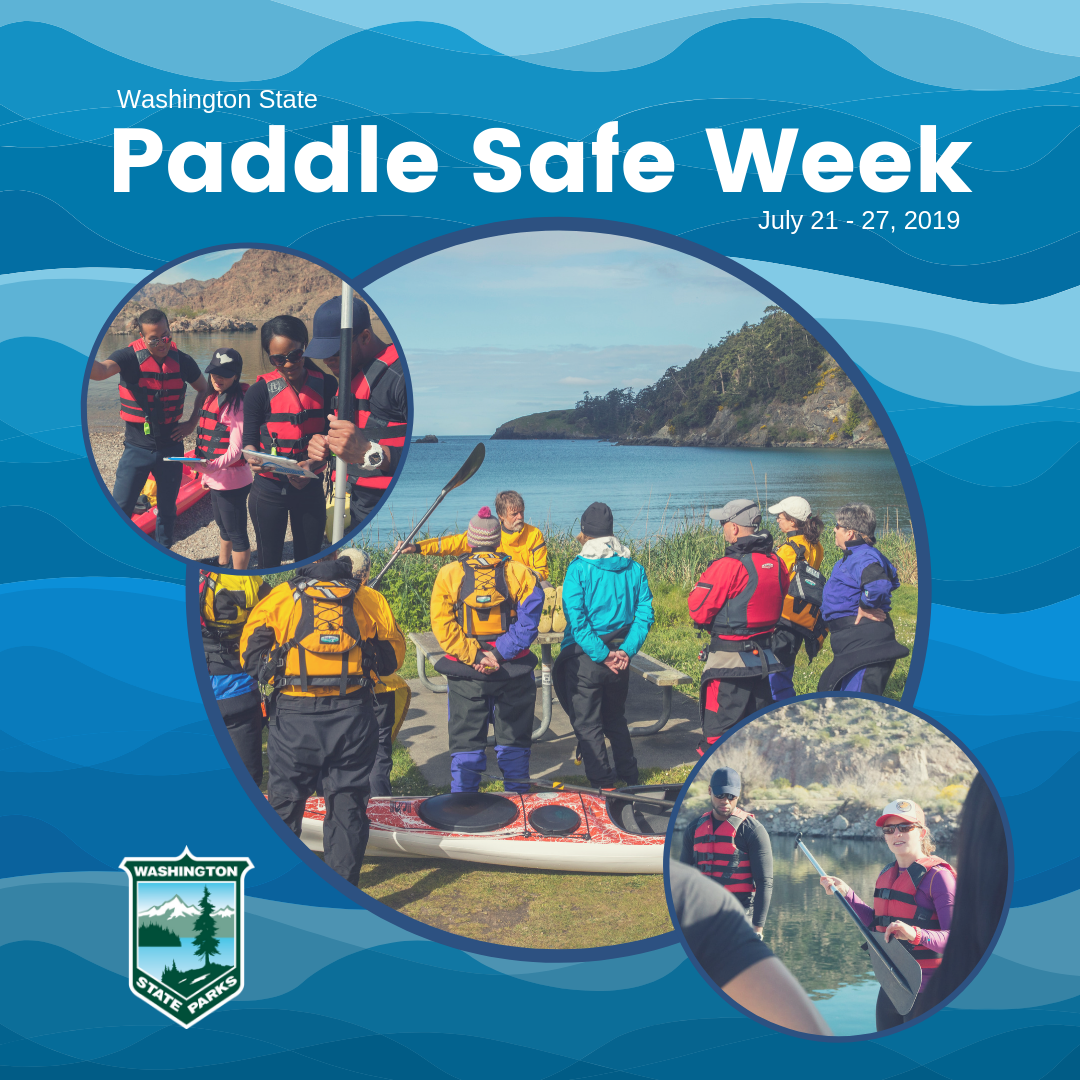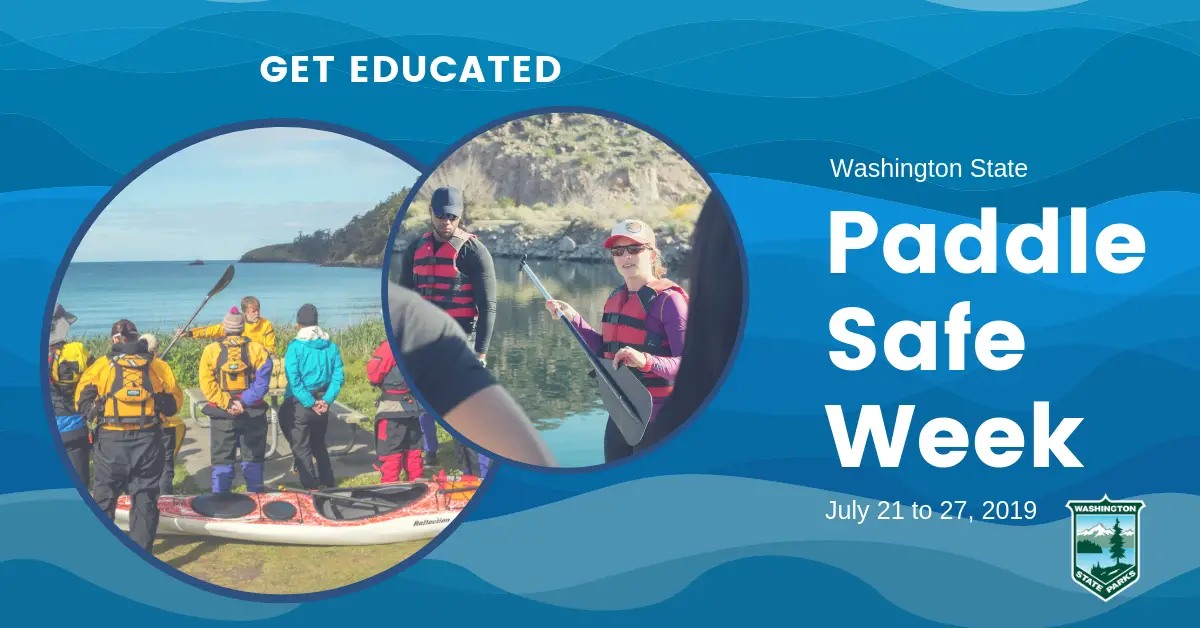Search
Latest Articles
Paddle Safe Week
by Washington State Parks Boating Program, July 07, 2019
Paddle Safe Week is July 21 to 27
Olympia – July [date], 2019 – Last month, Gov. Jay Inslee signed a proclamation declaring July 21 to July 27 as Paddle Safe Week. NWFR joins the Washington State Parks Boating Program in promoting this public safety campaign focused on increasing safety awareness among people who kayak, canoe and stand up paddleboard.
Paddlesports continue to grow in popularity and so are fatal accidents involving paddlers. Since 2012, close to half of all boating fatalities in Washington state involved paddlecraft. The leading type of accident is capsizing and swamping. The leading cause of death is drowning. And, in many cases, victims were not wearing life jackets.
Paddlesport experts recommend the following safety tips for paddlers:
Get educated
Know the laws and keep yourself and others safe. At a minimum, take a course to increase your knowledge of paddlesport safety, emergency procedures and navigational rules. You can find classes through local clubs and outfitters, city and county parks and recreation departments and online.
Always wear a life jacket
State law requires all vessels, including canoes, kayaks and stand up paddleboards, to have at least one properly fitted Coast Guard-approved life jacket for each person on board. And all children, age 12 and younger, are always required to wear life jackets. Modern, comfortable life jackets are tailored specifically for paddlesports. No matter your age and skill level, you're encouraged to wear a life jacket every time you go out on the water.
Carry essential gear
Carry the essentials for safety, emergency communications and comfort. State law requires boaters to carry a sound-producing device, such as a whistle – even on a stand up paddleboard. Professional paddlers recommend carrying a cell phone (in a waterproof bag) and, on coastal waters, a VHF marine radio. In addition to items required by law, you should wear sun protection and bring a headlamp with extra batteries, dry bag and hydrating fluids. Carry a bilge pump and an extra paddle. Other essentials depend on the type of waterway and length of trip and should be researched in advance.
Check and understand the weather
Check the weather frequently before and during your trip, keeping an eye on current conditions and forecasts. Check warnings, weather conditions, wind and wave forecasts, tides and current conditions or river flows. It's important to understand how each of these elements affects your ability to operate your vessel. Seek information from locals in the know, heed any warnings and avoid navigating in unsafe areas. The National Weather Service (NOAA Weather Radio) broadcasts on marine band and standalone weather radios.
Protect against cold-water shock
Falling into water under 60 degrees is dangerous, and many of Washington's waters remain below 60 degrees all year — including lakes and rivers — even during hot weather. The biggest risk is not hypothermia but cold-water shock, which occurs in the first stage of immersion. Paddlecraft have a higher risk of capsizing. Avoid cotton and wear synthetic materials when a wet or dry suit is not available. Be prepared and always wear a life jacket.
Avoid alcohol and drugs
Situational awareness is key for safety on the water. That means always staying alert. Operating any vessel while under the influence of alcohol or drugs, including marijuana, is not only unsafe — it's illegal. Washington state's Boating Under the Influence (BUI) law applies to all boats including kayaks, canoes, stand up paddleboards, rowboats and inflatable fishing rafts.
Be visible to other boaters
Paddlecraft sit low on the water, making them difficult for other boaters to see. Paddle to be seen: Wear bright neon and contrasting colors, put highly reflective tape on paddles, use a flagpole and carry a bright light.
File a float plan
Before you head out, study your intended route and let someone know your plans. Include names of everyone going, the planned route, what time you're going and returning and what to do if you don't return when expected. Make this a routine every time you go out on the water.
Label your paddlecraft
If you own paddlecraft, keep your contact information in your boat, on a sticker or in some other way. When empty paddlecraft are found adrift, it's assumed someone is in danger and a search is launched. Calling the owner of a kayak or canoe found adrift can help prevent unnecessary searches and free up resources. Or, the call could help rescuers gather information that helps with the search. The U.S. Coast Guard Auxiliary provides free identification stickers at safe boating classes and other boating events.
Understand and follow the U.S. Coast Guard's "Navigation Rules of the Road."
Follow social media
People can learn more about and participate in Paddle Safe Week through social media by using some of the following hashtags: #PaddleSafeWeek, #PaddleSmart, #PaddleSafe, #PaddleSober, #PaddlePrepared, #PaddleToBeSeen

